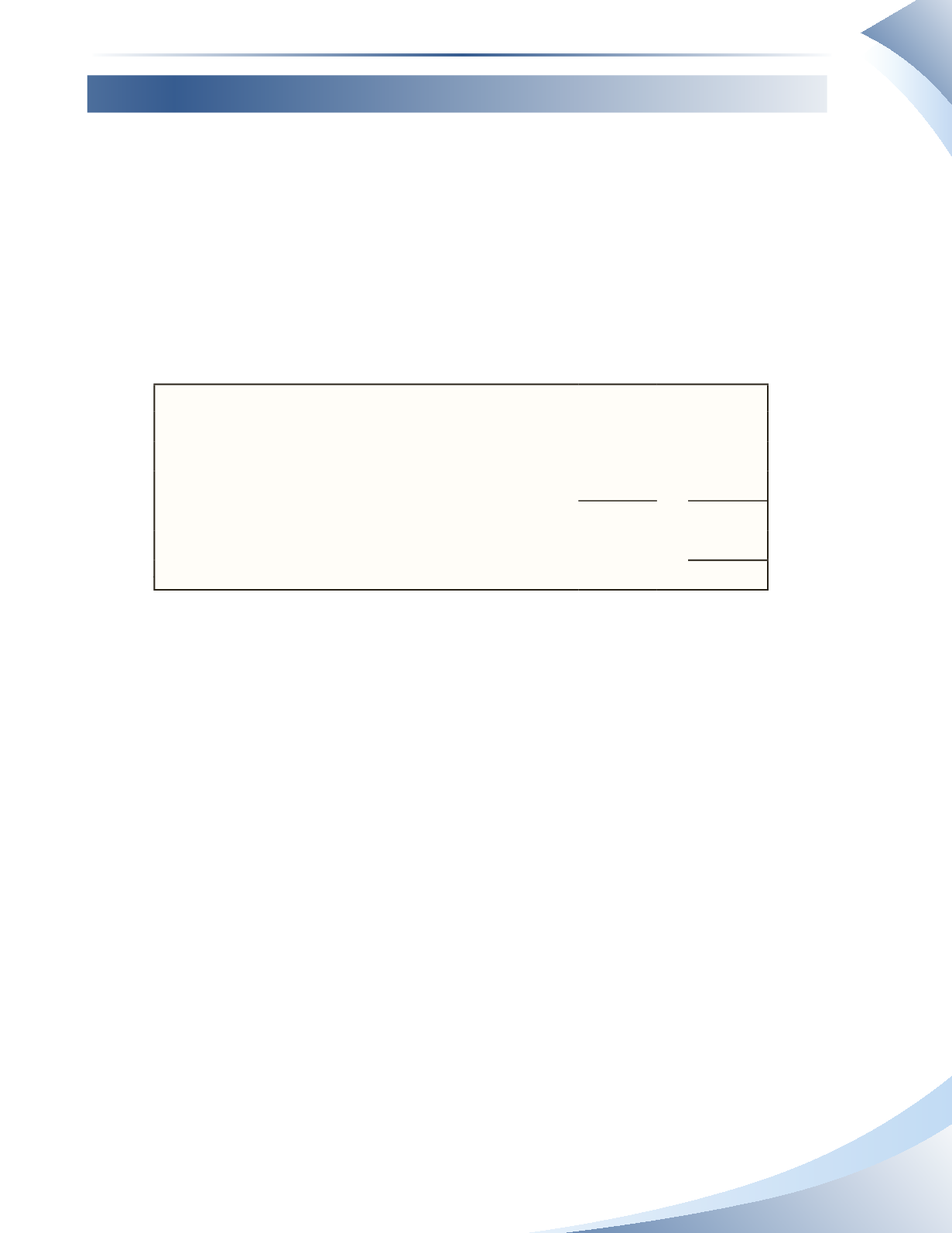
211
Reporting the Cost of Goods Sold
In a periodic system, the cost of goods sold is not known until the end of the period,when the ending
inventory is known.This is because, unlike the perpetual system where all costs flowed through the
inventory account, the costs that make up the cost of goods available for sale are kept in separate
accounts (beginning inventory, purchases, and freight-in). Once ending inventory is determined, it
is subtracted from the cost of goods available for sale to determine the cost of goods sold.
Cost of Goods Sold=Beginning Inventory +Net Purchases + Freight-In
-
Ending Inventory
Assuming the beginning inventory in our example is $20,000 and the ending inventory is $22,856,
the cost of goods sold is determined on the income statement as shown in Figure 7A.14.
The freight-in is added to net purchases to determine cost of goods available for sale.The value of
ending inventory is determined by a physical count and subtracted from cost of goods available
for sale to determine cost of goods sold.The amounts included in the inventory and cost of goods
sold is no different from the example under the perpetual inventory system. It is mainly a timing
difference regarding when these amounts are updated.
FOB and Inventory Counts
The terms of shipping items will have an impact on period end inventory counts. An inventory
count is supposed to include all inventory that is owned by the company, and this can include items
that are not physically at the place of business. All companies must pay careful attention to items
in the process of being shipped when counting inventory.
For example, suppose Company A purchases items with a cost of $10,000 with terms of FOB
shipping point. This means that Company A takes ownership of the goods as soon as they are
loaded onto the carrier, and should include these as part of its inventory. While these goods are in
transit, Company A performs an inventory count and does not include the inventory that they just
purchased. This means that the value of ending inventory on the balance sheet will be too low, or
understated by $10,000. If Company A uses the periodic inventory system, an understated ending
inventory will cause COGS to be overstated and net income to be understated. This is shown in
Figure 7A.15.
Cost of Goods Sold = Beginning Inventory + Net Purchases + Freight-In − Ending Inventory
Beginning Inventory
$20,000
Net Purchases
$13,756
Freight-In
100
13,856
Cost of Goods Available for Sale
$33,856
Less: Ending Inventory
22,856
Cost of Goods Sold
$11,000
______________
Figure 7A.14
Inventory: Merchandising Transactions
Chapter 7 Appendix


